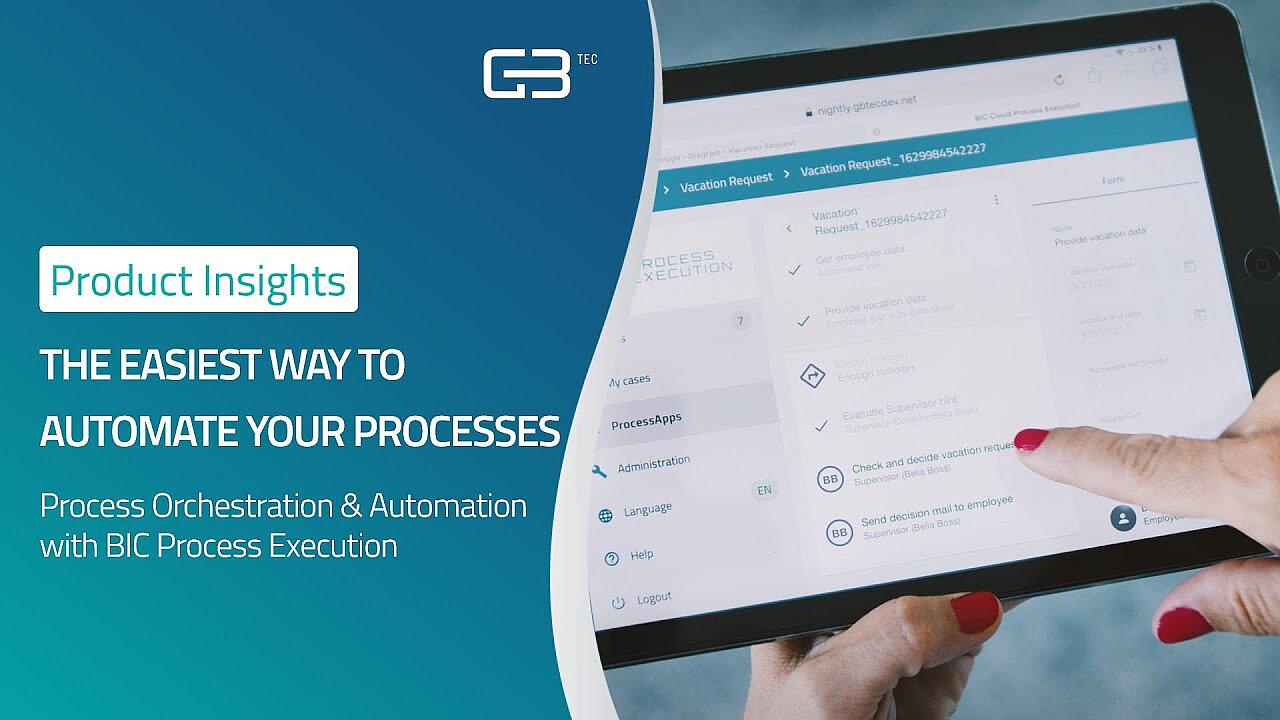BIC Process Design
Understand & Transform
Supercharge your business operations with the most intuitive AI-powered BPM software.
It seems that you come from a German speaking country. Here you can change the language
EnglishDigitalization potential lies dormant in just about every area of a company and process. Although employees and management want to use this potential as quickly as possible in order to benefit from accelerated, paperless and less error-prone processes, the necessary IT resources are often lacking. With no-code and low-code technologies, departments can digitalize their processes quickly, cost-effectively, and without extensive programming skills, thus bringing speed to the digital transformation.

Table of Contents
Author
Christoph Windgassen


Automated business processes are drivers of digital transformation. Yet many companies continue to execute their processes manually, slowing themselves down. No-code and low-code platforms help to create digital workflows in the shortest possible time, while writing little to no code. This means that even non-technical users in the departments, who usually know their own workflows best, can create their processes largely without the help of the IT department - and save not only time, but also resources and costs. In addition, no-code and low-code development platforms make departments much more flexible and enable them to make adjustments to changing business processes more quickly. Automation and digitalization plans can be accelerated many times over with no-code and low-code automation, giving companies a decisive competitive advantage.

No-code platforms describe a development environment for software that enables the creation of applications via graphical user interfaces instead of traditional programming. They are aimed at business users, often also called Citizen Developers, and have ready-made modules and intuitive drag-and-drop functions that make configuring digital workflows particularly easy. The more clearly the user interface is designed, the better and faster business users will find their way around. The primary goal of no-code automation is to simplify the application development process: users do not have to write a single line of code to create applications and therefore do not need any software development skills. As simple tools, no-code platforms are thus ideally suited for creating multiple workflows in the shortest possible time.

Low-code platforms go beyond the pure no-code approach and are intended for more complex processes that require manual input and minor technical skills and IT knowledge. Scripting functions can be used to manually add specially created program code and thus quickly implement individual workflow solutions for demanding digitalization projects. A combination of visual interfaces and coding sections provides developers with good guidance within low code automation, making it easier for them to reuse, optimize and simplify integration tasks. Depending on the functionalities of a software, it can be assigned to both categories (no-code and low-code automation).
The importance of no-code and low-code automation has increased dramatically in a very short time. This approach is becoming more and more popular among business managers, IT managers and specialist departments. But what is the reason? While scarce IT resources call for easier ways of application development, the digitalization requirements in the business departments are constantly rising. Additionally, economic dynamics in the markets demand from companies to develop processes and solutions quickly so as not to miss the time-to-market and continue to retain customers. No-code and low-code development platforms can be used to counteract the shortage of IT specialists: instead of dealing with the process-related realities of the individual departments, the IT department can devote itself to complex technical issues and higher-level administration and configuration. The departments, on the other hand, independently take over the specification of the workflows to be automated, thus relieving the IT department. In this way - despite scarce IT resources - the increased digitalization requirements of the specialist departments can be met without any problems.

Reduced IT complexity
Especially for employees who have deep expertise but no connection to programming, no-code and low-code is of great benefit. Via graphical user interfaces and standardized building blocks, they create applications without any IT knowledge.

Higher productivity
The same number of employees, but more work getting done: With no-code and low-code automation, companies can focus on key priorities instead of repetitive tasks, significantly increasing productivity.

Minimal use of resources
Since no-code and low-code technologies do not require long lines of code, processes can be automated in a very short time. This means less time and effort for employees and at the same time promotes motivation.

Increased flexibility
Make individual changes to processes quickly? No problem with no-code and low-code automation! The market is constantly changing - those who can react flexibly and adapt well are always at an advantage.

Effective governance
Many companies have to deal with changing regulations on a regular basis. No-code and low-code platforms help to comply with all regulations and remain risk-proof even in times of major change.

Relief for IT
Due to scarce developer resources, the IT department is already overloaded - with no-code and low-code, partial tasks can easily be shifted to the business departments and implemented by the business users.
No-code and low-code platforms offer many advantages. The question of whether you should prefer no-code or low-code automation always depends on the type and scope of your applications and the size of your company. Your specific projects also play a role, as there are different challenges depending on the project. In principle, many application developments can be implemented without programming effort, i.e. with no-code automation. If you would like to make individual additions to your processes and be able to adapt flexibly to the challenges of digitalization, the option of additional programming via a low-code platform is the right choice.
But it's about more than just the technology. Consider what your users really need and significantly supports their daily work. The best way to achieve this is for skilled IT developers to work with relevant departmental professionals, pooling expertise and driving collaboration. Close collaboration in application development enables more efficient and accurate creation of larger and more complex applications. Furthermore, you should clarify in advance which employees should primarily work with the tool, whether application development should be complementary or integrated, and what the forecasts are for the future in terms of the complexity of your processes.

Manual processes still waste a lot of time and money in many companies today. Unnecessary errors caused by human processing jeopardize customer satisfaction and thus the entire business. Automated processes are and will increasingly become the key to success: By automating simple processes without human intervention, errors in manual processing are significantly minimized, saving valuable time and a lot of money. If you're dreaming of higher customer and employee satisfaction, better compliance, reduced costs and greater agility in the future, you're turning to automation. No-code and low-code platforms are becoming more and more appreciated, as lack of programming skills is no longer an obstacle: Processes can be digitalized and automated without complex workflow projects - taking companies to a whole new level.
BIC Process Execution covers all requirements for digital workflows, automated processes, transparency, collaboration and efficient business processes. At the same time, the software impresses with its modernity, intuitive handling and technical excellence. Convince yourself!
Get even more out of your processes with our breakthrough zero code technology and transform your business processes directly into executable processes without any programming. Get to know the advantages of our automation software.


Head of GBTEC Academy
Christoph isn’t just the head of our GBTEC Academy – he also brings years of experience and deep expertise across our entire product portfolio. For many years, he worked closely with our customers as a consultant. Today, he and his team provide not only product-specific trainings but also help companies and professionals strengthen their skills in a wide range of topics, even beyond our own product offerings.
We have the information you need to unleash your full process potential. Take a look at our resources and start improving your business performance today.